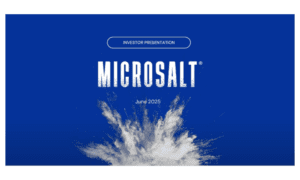Learn more about what lies at the heart of salt’s chemical makeup and the close link between sodium and health
Key takeaways:
- Salt, sodium, and sodium chloride are essentially the same thing
- Sodium in responsible quantities is essential to optimal bodily function
- A low-sodium lifestyle can promote better health and quality of life
- Many foods are protected from bacteria by adding salt
- Salt comes in many types, which influences its sodium content
Sodium is in almost every food we consume and sits on most home and restaurant tables, yet very few people know anything about it beyond its taste and appearance. The relationship between salt, sodium, and sodium chloride is a mystery for most consumers – and so are their applications and health effects, both positive and negative.
A better understanding of how sodium works and how it can help or hinder our health can foster increased awareness and a deeper appreciation of how heavily our society relies on this common mineral. Read our guide for a crash course on how this chemical element became such an integral part of our daily lives.
A look back at sodium history
Throughout human history, salt has been a highly prized commodity. From Ancient Egypt to the present day, salt has played a key role in food safety, being used as a preservative, stabilizer, and binder in the foods of nearly every culture on Earth. Salt is a microbial inhibitor that draws water out of bacteria, causing microbial cells to collapse and disintegrate. This is the key to its ability to prevent food from spoiling as quickly.
Salt thus proved essential to the survival of human communities when meat was scarce and harsh seasons limited food production. Salt’s antibacterial, antifungal, and antiviral properties also saw it used medicinally when mixed with water to form a mouthwash or added directly onto wounds to accelerate healing.
Trade routes sprang up within and between civilizations to transport this “white gold” to areas where it was needed. From the Trans-Saharan networks of the first millennium to Europe’s medieval Old Salt Road, these routes became critical to regional and global trade and spurred the economic growth and well-being of towns, cities, and nations.
The science behind sodium
Scientifically speaking, sodium has only been with us since its discovery in 1807 by British chemist Sir Humphry Davy. This alkali metal became the eleventh element on the periodic table, termed “Na” – an abbreviation of “natrium” which is Latin for sodium carbonate.
Davy was the first to successfully isolate sodium from caustic soda via electric current, and his discovery was momentous. All prior efforts to extract sodium had failed due to its high level of reactivity, but Davy’s achievement in chemistry would allow for great strides in biology and medical science.
Fast forward to 1957, when the first nuclear reactor in the United States was cooled using sodium, revealing the element’s potential use in reducing extreme temperatures. Salt is also key to many other processes, including the production of soaps, glass, plastic, and paper.
Sodium and health
Of course, most people’s experience with sodium begins and ends with the saltshaker. Ordinary table salt, also known as sodium chloride (NaCl) is made up of around 40% sodium and 60% chloride. And thanks to Sir Humphry Davy’s pioneering work, today’s scientists and medical professionals understand a whole lot more about how those little white grains affect our bodies.
On the positive side, sodium is something we literally can’t live without. It’s essential to vital functions like maintaining the body’s delicate mineral and fluid balance, allowing muscles to contract and expand, and ensuring that electrical signals are transmitted successfully from head to toe.
Salt also tastes good by itself and makes other foods taste better by enhancing some flavors and masking less-desirable ones. Unfortunately, its versatility in flavoring food is where salt starts posing a risk that can become seriously detrimental to our health.
Sodium’s potential dangers
Hypertension (high blood pressure), stroke, heart attack, and heart disease have all been linked to excessive sodium intake. But what does “excessive” mean? The recommended daily limit of sodium for adults is 2300 mg, or about one teaspoon. For children under age 14, that number is even lower.
Of course, these limits are general guidelines. Athletes, for instance, need more salt to replenish the sodium they lose through physical exertion. And people who take medications may require more or less salt depending upon the effects of the drug. So before adjusting your sodium intake, it’s best to consult with a physician. A blood or urine sodium test can reveal another sodium secret, namely how much is currently in your system.
Sodium types and their associated content
There are many types of salt available on the shelves of your local market. And they all contain different amounts of sodium. Here are just a few examples:
- Kosher salt – 1120 mg sodium per teaspoon
- Black Salt – 1150-2200 mg sodium per teaspoon
- Sea salt (fine) – 2120 mg sodium per teaspoon
- Iodized table salt (fine) – 2300 mg sodium per teaspoon
Of course, it’s pretty easy to keep track of your sodium intake when you’re adding any of these salts to your food by hand. But it’s the sodium in processed, prepared, and packaged foods that’s responsible for most of the average American’s daily intake. Knowing how to decode sodium labels is a vital skill in adopting and maintaining a low-sodium lifestyle. And finding a sodium alternative that lets you enjoy a salty taste while respecting your body is equally important.
The secret to the success of MicroSalt®
MicroSalt® is helping to write a new chapter in sodium history. Our revolutionary, patented microparticles provide consumers and food manufacturers all-natural salt with only half the sodium. Our SaltMe®! Chips come in four tasty flavors while our MicroSalt® shakers are becoming more widely available to make mealtimes healthier for everyone.
MicroSalt®’s dedication to lowering sodium without sacrificing flavor won us the Sodium Reduction Technology Provider of the Year award in 2022 and made us the Global Winner of the P&G Alumni Network Star Entrepreneur Award for 2021. Contact us to learn more about how we’re making a low-sodium lifestyle easier than ever!




